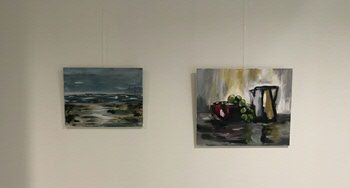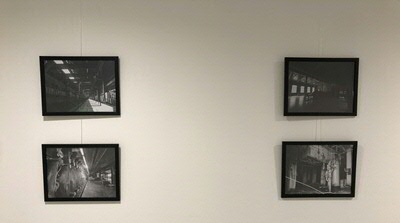Art in the hallway to the Deephuis Room

Anyone entering the corridor toward the Diephuis Room will see two black-and-white photographs and two small paintings hanging there. The two photographs were taken by professor of economic law Hans Vedder; the paintings were made by Law alumna Irene Buitenhuis.

Industrial activity in Groningen was helped greatly because of the ample supply of energy. This energy first came in the shape of human labouw with workers firing boilers to help make carton from straw that was also produced in abundance in the eastern part of Groningen. This was later traded for enery in the form of natural gas and electricity. Again, natural gas was plentiful with one of the world's biggest natural gas reservoirs just a few kilometers below the surface of Groningen and the conversion to electricity was cheap and easy as well.
Industrial transformations are everywhere and of all times. Vedder's four images (all taken in 720nm infrared light) show what happens during or after such a transformation. Buildings become empty shells, workplaces are abandoned and the quest for new purposes starts. Law of course has a role to play in this regard, regulating the bankruptcies, worker protection and often the cleanup of environmental pollution.
Law relating to worker protection have contributed tot he demise of some of these companies as they increased wages and simply banned certain forms of labour, for example in De Toekomst. Strokartonfabriek 'De Eendracht' was fined 1.75 million Euros for infringing Article 101 TFEY which didn't help its profitability and NEG and Aldel both succumbed to energy prices that could no longer be artificially lowered by means of state aid. To Vedder's mind, these sleeping industrial giants have a subtle beauty and allow us to contemplate the fleeting nature of so many human activities, including lawmaking.
| Last modified: | 17 December 2024 09.51 a.m. |
